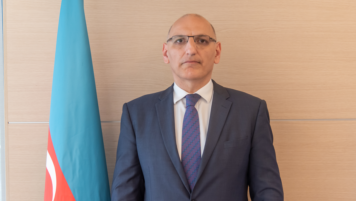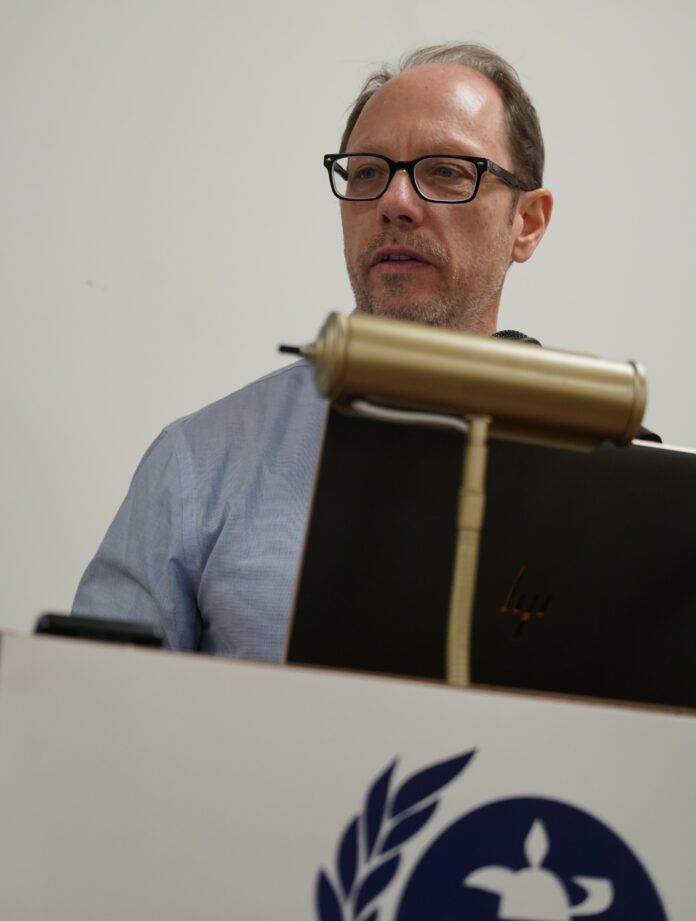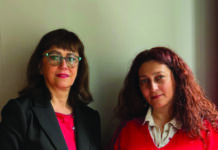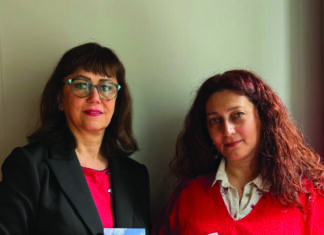WATERTOWN — Dr. Sergio La Porta presented a lecture titled “When Things Fall Apart: Disentangling Christian-Muslim Relations in Medieval Armenia” at the Baikar Center in Watertown, for the Tekeyan Cultural Association (TCA) Boston Chapter on March 25. The talk was organized with the support of Dean Shahinian and cosponsored by the National Association for Armenian Studies and Research (NAASR) and the Armenian Cultural Foundation.

After the loss of Armenian independence with the fall of the Bagratuni and Artsruni kingdoms in the Armenian highlands, Turkic and Kurdish populations moved into majority Armenian-populated areas during the chaotic 12th century. La Porta examined Christian-Muslim relations in the Armenian highlands in this period through four brief stories, the first two of which were related as episodes in histories written in the 13th century, 100-150 years after the events they describe, and the last two as martyrologies not usually used as historical sources. La Porta accompanied his talk with PowerPoint illustrations.
The first tale, from Vardan Areveltsi’s Historical Chronicle (written AD 1268), concerned Grigor, the keeper of the keys of the Armenian cathedral of the city of Ani. While passing a Turkmen encampment outside the city of Dvin, Grigor praises Christ and at first is imprisoned. However, he is released by Fadlun, the Kurdish ruler of Ani and Dvin after being frightened by a vision at night. La Porta speculates that Grigor may have been proselytizing, while Fadlun, who had an Armenian Bagratuni grandmother and great-grandmother, may have had personal reasons for sparing Grigor.
A story from a slightly later period written by Kirakos of Gandzak (1203-72) as part of his History, took place in the territory under the jurisdiction of the Catholicosate of the Caucasian Albanians. Catholicos Stepanos sent a bishop to Gandzak to collect income from the priests and Christian city dwellers. The emir or ruler of the city, named Gurji Badradin, asks the bishop to summon the catholicos to bless the waters. Indeed, he does, but when the Muslims of the city see the catholicos pour oil into the water, they fear he is trying to convert them, and lock both him and the emir up. They inform the emir’s superior, the atabeg in Isfahan, who orders the emir to be sent to him.
La Porta observes that in fact, the blessing of the waters is a service which is part of the celebration of Christ’s baptism — a major Christian religious ceremony — which explains the panic of the local Muslims. Moreover, Badradin is called Gurji, or “Georgian,” implying some kind of connection with the expanding Christian Georgian kingdom to the north.
These first two stories, therefore, indicate an attempt to attempt to minimize the appearance of both Muslim anxiety over being converted and the existence of local rulers with some sort of connections to Christians. Both stories are preserved in 13th-century Armenian historical works.
Unlike these two stories, in two accounts of martyrdoms that are said to occur in the same period, and in fact were written down only a couple of decades after the events they purport to recount, Christian agency is highlighted. The focus is also on ordinary people, not elites as in the first two stories.









